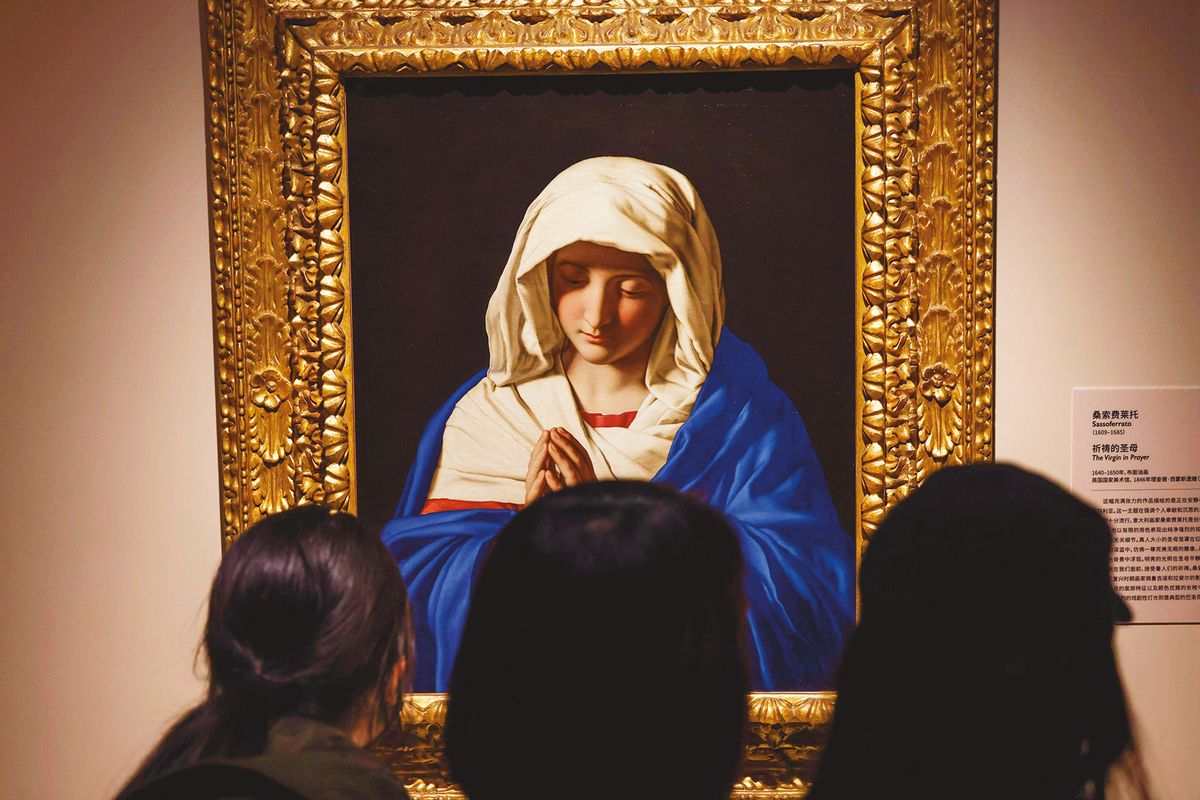The National Gallery has just staged its most popular charging exhibition ever, not in its London home but in China.
Botticelli to Van Gogh: Masterpieces from the National Gallery, London closed at the Shanghai Museum on 7 May, attracting over 420,000 visitors in its 15-week run, equivalent to more than 4,300 a day, who each paid 100 yuan ($14) to see the show.
Up until then, the National Gallery’s most successful charging exhibition had been Leonardo da Vinci: Painter at the Court of Milan, which attracted 3,680 people a day to the museum in 2011-12, for a total attendance of 323,827.
International tour
Botticelli to Van Gogh was conceived as a concise history of Western painting and comprises 52 loans from the National Gallery’s permanent collection, including works by Raphael, Caravaggio, Rembrandt, Constable, Turner, and Monet. It is now on display at the National Museum of Korea in Seoul (until 9 October) and then travels to its final venue, the Hong Kong Palace Museum (15 November-4 March 2024).
The decision to send a selection of paintings to Asia was taken by the National Gallery board in the run-up to the closure of the museum’s Sainsbury Wing for a £35m refurbishment. In September 2022 the board approved the contract for Botticelli to Van Gogh’s international tour after “carefully considering” the issues involved, the gallery said.
“The National Gallery has an important role to play in promoting the UK’s globally recognised position as a centre for culture and the arts, and we remain passionately committed to cultural exchange internationally,” its director, Gabriele Finaldi, said when the exhibition was announced.
The museum will not divulge its earnings for its Asian loans, but the National Gallery board was presumably mindful of the enormous appetite for Western art in China when approving them: in 2018 the Shanghai Museum hosted Tate’s top visited exhibition ever, Landscapes of the Mind: Masterpieces from Tate Britain (1700-1980), which was seen by 615,000 visitors in 14 weeks—more than 6,000 a day.
As major museums in London struggle to regain visitors following the pandemic and the concomitant reduction in international tourism—last year the National Gallery had 2.7 million visitors, a 55% drop on its 2019 figure of 6 million—trustees are likely to continue to seek new commercial opportunities abroad, with Chinese museums topping the list of lucrative international partners.
The Pompidou Museum in Paris, the Victoria & Albert Museum and the Tate in London all have long-standing collaborations in China, while the Uffizi Museums in Florence recently signed a €6m agreement to send ten exhibitions to the Bund One Art Museum in Shanghai over five years (Botticelli and the Renaissance, a loan show of 48 paintings from the Uffizi, is currently on view there until 27 August). All of these institutions have remained silent on the issue of China’s human rights record; its suppression of protest in Hong Kong; its detention of around 1 million Uyghurs and other Turkic Muslims in the Xinjiang region, and on the ethics of partnering with State-run museums and organisations in the country.
Chinese dissident artist Ai Weiwei previously told The Art Newspaper that he is dismissive of Western museums’ claims to be promoting values of tolerance and free expression with their Chinese collaborations. “Most of them are in China purely for strategies of self-development, attempting to get away from the struggles facing institutions in the West,” he said, adding that “if you do not question Chinese power, you become complicit with it.”
Sir Geoffrey Nice, who chaired a 2021 independent tribunal on Chinese persecution of the Uyghurs in Xinjiang which determined that China is guilty of genocide, challenged any organisations who “interact in any substantial way [with China] including…educational and arts establishments [to] now recognise that they are interacting with a criminal state.”
In a statement, the National Gallery said: “In line with lots of museums, cultural, educational, and scientific organisations in the UK, [we] collaborate with a range of partners internationally. The gallery works with them to reach larger audiences on the basis that it strongly believes art is available to all. Such collaborations are not endorsements of any international government policies, and the gallery condemns any violation of human rights.”


